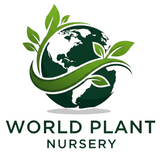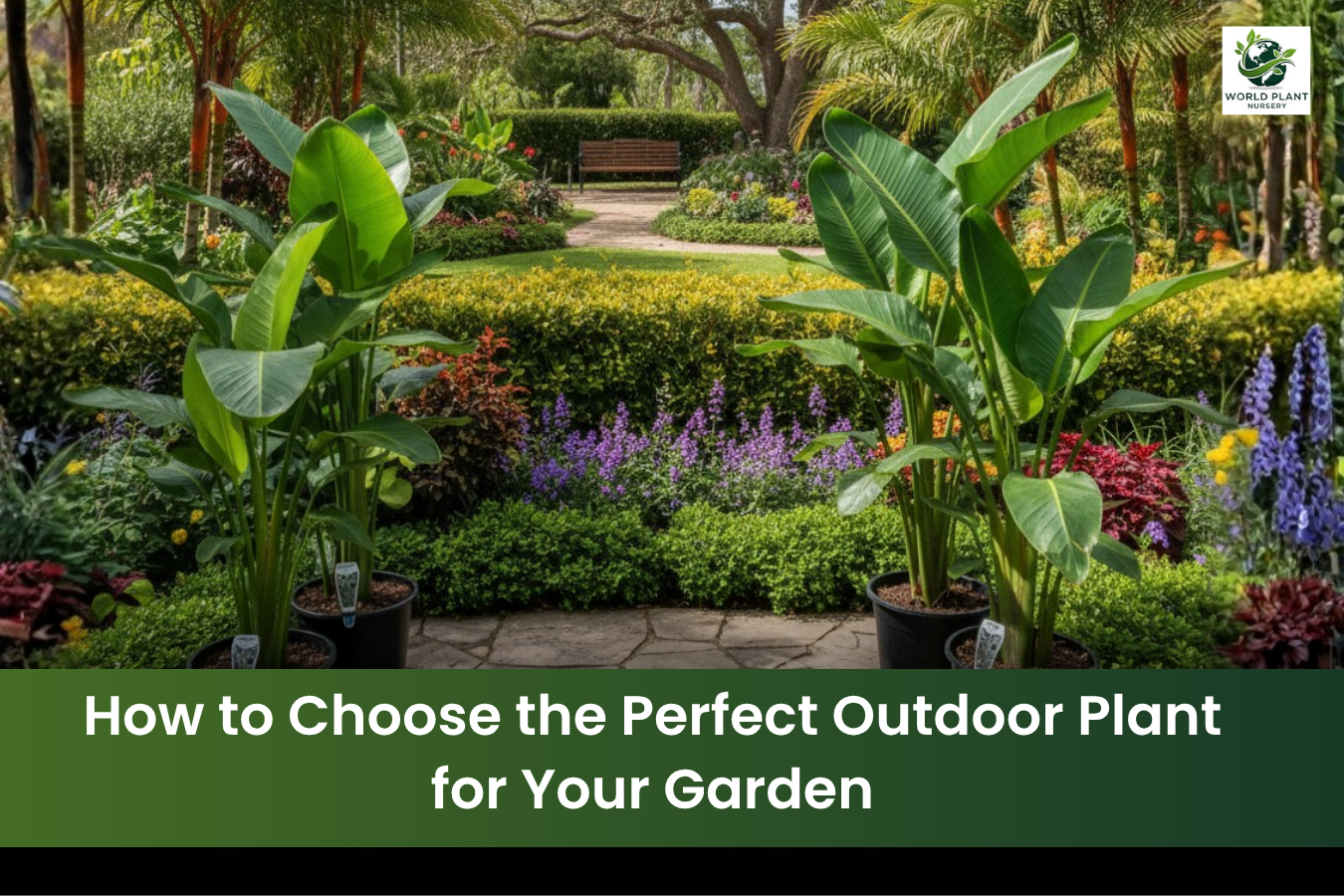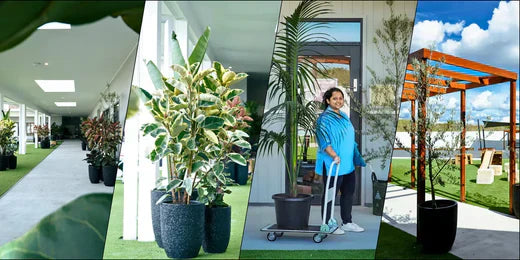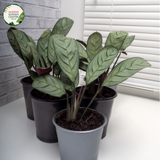Match outdoor plants to your sunlight, climate zone, and how much time you have. New to gardening? Go with hardy, low-maintenance outdoor plants like lavender or hostas. Think about your space too. Do you need outdoor hanging plants for walls or something big for extra-large pots for outdoor plants to make a statement?
What Makes an Outdoor Plant Right for Your Space?
Picking the right outdoor plant isn't about what catches your eye at the store. I killed three expensive Japanese maples my first year. Bought them because they looked good. Didn't think about where they'd actually live.
Here's what works: honest assessment of three things. Your microclimate. Your commitment level. What you want it to look like?
Your garden has its own personality. Conditions shift throughout the day. They change with seasons. That south-facing wall? Creates a heat zone. Mediterranean plants love it. Shade plants will burn. The spot under your oak tree gets dappled light. Woodland natives thrive there. Sun-loving bloomers struggle.
Walk your space at different times: morning, noon, and evening. Note where shadows fall. Watch wind patterns. Some areas stay dry. Others collect moisture. This matters more than any advice I can give you.
How Do I Determine My Garden's Growing Conditions?
Know your environment. It prevents expensive mistakes. Sets you up to succeed.
Sunlight Categories:
- Full sun: 6+ hours of direct sunlight (roses, lavender, coneflowers do well)
- Partial sun/shade: 3-6 hours of direct light (hydrangeas, astilbe, coral bells thrive here)
- Full shade: Less than 3 hours of direct sun (hostas, ferns, hellebores handle this)
USDA Hardiness Zone: Determines which plants for the outdoors survive your winters. I'm in Zone 7a. I can push boundaries with some Zone 8 plants if I protect them. Zone 10 tropicals? Seasonal visitors only. Check your zone at the USDA website. Takes thirty seconds. Free.
Soil Composition: Grab a handful of moist garden soil. Sandy soil crumbles right away. Drains fast. Clay soil forms a sticky ball. Stays wet. Loamy soil holds shape but breaks apart without much pressure. That's the good stuff. Most outdoor garden plant pots let you skip poor native soil entirely. Why container gardening has gotten so popular.
Why Does Plant Maintenance Level Actually Matter?
Every book says their plants are "easy care". That's relative. When I worked with a busy executive who travelled monthly, we built his landscape around genuinely the best low-maintenance outdoor plants. Plants that forgave two-week absences. Required minimal fuss.
True Low Maintenance Looks Like:
- Drought tolerance once roots are establish (sedum, Russian sage, yucca)
- No deadheading needed for continuous bloom (daylilies, salvia)
- Resists pests and disease (coneflowers, ornamental grasses)
- Needs minimal pruning (dwarf conifers, knockout roses)
High-maintenance plants demand regular deadheading. Specific fertilisation schedules. Staking. Pest monitoring. Precise watering. Hybrid tea roses are stunning. Needs weekly attention though. Clematis requires you to understand pruning. Dahlias must be lifted and stored in cold climates. Not beginner plants unless you want the learning curve.
What Are the Best Outdoor Plants for Different Situations?
I've designed over 200 residential gardens. Some plants deliver results every time. Across various scenarios.
For Full Sun Locations
Lavender (Zones 5-9): This Mediterranean native thrives on neglect. Plant it in soil that drains well. Water sparingly. Get fragrant blooms that bring in pollinators. Works beautifully in outdoor plant pots where you control drainage.
Black-Eyed Susan (Zones 3-9): Native to North America. Cheerful yellow blooms from mid-summer through fall. They self-sow a bit. Fill in gaps. Don't become invasive. Deer usually leave them alone.
Sedum 'Autumn Joy' (Zones 3-9): Set it and forget it. Succulent leaves store water. Makes it genuinely drought-proof. The seed heads look great even in winter. Architectural.
For Shade Gardens
Hostas (Zones 3-9): Hundreds of varieties available. Miniature to giant. Unmatched foliage interest. They're among the best outdoor plants for turning shady problem areas into lush landscapes. Main maintenance task? Slug control.
Astilbe (Zones 4-9): Feathery plumes in pink, white, or red. Brighten shaded spots in early summer. They like consistent moisture. Ideal companions for downspout areas.
Ferns (Various zones): Native ferns adapted to your region provide effortless elegance. Autumn fern (Zones 5-9) offers bronze spring colour. Japanese painted fern adds silver variegation.
For Container Gardens
Boxwood (Zones 5-9): Classic evergreen structure. Works in outdoor plant pots from tiny to extra large pots for outdoor plants. Tolerates pruning into any shape. Provides year-round interest.
Trailing Verbena: Perfect for outdoor hanging plants. This annual (perennial in warm zones) cascades beautifully. Blooms nonstop. Minimal deadheading.
Ornamental Grasses: Dwarf fountain grass or blue fescue add movement and texture to container arrangements. Root systems adapt well to confined spaces.
When Should You Plant Different Types of Outdoor Plants?
Timing impacts establishment success. Big time.
Spring Planting (After Last Frost): Best for warm-season annuals, tropicals, and tender perennials. The extended growing season helps plants establish robust root systems before winter. Also ideal for summer-blooming perennials like daylilies and coneflowers.
Fall Planting (6-8 Weeks Before Ground Freezes): My preferred season for woody plants, shrubs, and hardy perennials. Cooler air means less transplant stress. Soil stays warm enough for root growth. Fall-planted specimens establish better root systems. Outperform spring-planted equivalents the next year.
Container Plants: Can be planted almost anytime during the growing season. Their roots haven't been disturbed. Avoid planting during extreme heat (above 90°F) when possible, though.
Where Should You Position Plants for Maximum Success?
Placement mistakes kill more plants than anything else. Consider these principles.
Vertical Layering: Design landscapes in height tiers. Groundcovers in front. Mid-sized perennials in the middle. Tall shrubs or small trees in back. Creates visual depth. Ensures smaller plants aren't shaded out.
Spacing Reality: Don't plant densely for instant impact. A three-gallon shrub labelled "mature spread: 4 feet" genuinely needs that space. Crowded plants compete for resources. Develop fungal issues from poor air circulation. Lose their natural form.
Microclimates: Use your garden's unique zones. Place heat-lovers against south-facing walls. Reflected warmth extends the season. Position marginal-hardiness specimens near building foundations. Temperatures stay warmer there.
Access Paths: Leave room to reach plants for maintenance. I've seen too many enthusiastic gardeners create beautiful borders they can't tend. Have to crush plants to reach the back.
How Do I Match Plants to Different Pot Sizes?
Understanding container proportions transforms patio and balcony spaces. Turns them into thriving gardens.
Small Pots (10-12 inches): Herbs, compact annuals, small succulents, dwarf varieties. Needs daily watering in hot weather. Limited soil volume.
Medium Pots (14-20 inches): Most perennials, small shrubs, ornamental grasses, and vegetable plants. This size offers good root room. Still movable.
Large Pots (22-30 inches): Substantial perennials, medium shrubs, small trees (Japanese maple, dwarf conifers). Provide enough soil mass for better moisture retention.
Extra Large Pots for Outdoor Plants (30+ inches): Specimen trees, large shrubs, mixed tropical displays. These containers create architectural focal points. Function like mini-raised beds. The substantial soil volume means less frequent watering. More stable root temperatures.
Always ensure outdoor plant pots have drainage holes. Even water-loving plants need oxygen at their roots. Saturated soil leads to root rot eventually.
What Common Mistakes Should I Avoid?
Years of troubleshooting struggling gardens. The same errors appear over and over.
Impulse Buying Without Research: That gorgeous blooming specimen at the garden centre might be suited for Zone 9. You're in Zone 5. Always check plant tags before purchasing.
Ignoring Mature Size: That cute three-foot hydrangea? Becomes eight feet wide in five years. Plan for growth. Or commit to aggressive pruning.
Overwatering Established Plants: New plants need consistent moisture. Once established, though? Most prefer their roots to partially dry between waterings. More outdoor plants die from overwatering than underwatering.
Fighting Your Soil: Amending small planting holes in clay or sand creates "bathtub" effects. Roots circle rather than spreading. Either amend extensively (entire beds) or choose plants adapted to your existing conditions.
Neglecting Seasonal Interest: Gardens designed around spring bloom look barren by August. Incorporate plants with staggered bloom times. Attractive foliage. Fall colour. Winter structure.
Why Do Some Plants Fail Despite Following All the Rules?
Even experienced gardeners lose plants. That's normal. Several factors beyond basic care affect survival.
Transplant Shock: Moving from controlled nursery conditions to your garden stresses plants. Symptoms include leaf drop, wilting, and growth pauses. Most recover within weeks if basic needs are met.
Pest Pressure: Some years bring unusual pest explosions. Japanese beetles appeared in biblical swarms during my second gardening season. Devastated my roses despite preventive measures.
Weather Extremes: Unexpected late frosts. Record droughts. Unusual winter temperature swings. Can damage even properly chosen plants. This is gardening's inherent uncertainty.
Root Problems: Nursery plants sometimes develop circling roots. Strangle the plant years after planting. Always examine and loosen root balls before planting.
The best low-maintenance outdoor plants minimise these risks through inherent resilience. Nothing's foolproof, though.
How Can I Create Successful Container Combinations?
Container design follows specific formulas. Produce professional results consistently.
Thriller, Filler, Spiller Method:
- Thriller: Tall centerpiece plant (ornamental grass, spike plant, small shrub)
- Filler: Medium-height plants that bulk up the arrangement (geraniums, petunias)
- Spiller: Trailing plants that cascade over edges (sweet potato vine, trailing verbena)
Colour Harmony: Choose either complementary contrasts (purple and yellow) or analogous blends (various shades of pink through purple). Monochromatic schemes in different textures create sophisticated elegance.
Shared Requirements: All plants in one container must need similar water, sunlight, and soil conditions. Don't combine succulents with impatiens. They have opposing needs.
Proportion: The container should be roughly one-third the height of the finished planting. Too-small pots look stunted. Oversized containers dwarf the plants.
What Resources Help Identify the Right Plants?
Beyond this guide, these tools speed up your plant knowledge.
Local Extension Services: Free, research-backed advice specific to your region. They know which plants thrive locally. Can test your soil.
Native Plant Societies: Experts in regionally appropriate selections. Support local ecosystems. Require minimal intervention once established.
Botanical Gardens: Walking curated collections lets you observe mature plant specimens. Discover new favourites. Many offer plant sales with expert staff.
Garden Apps: Picture This and PlantNet identify plants from photos. Garden planning apps help visualise designs before purchasing.
Specialised Nurseries: Unlike big-box stores, dedicated nurseries employ knowledgeable staff. Can answer detailed questions. Often carry unusual varieties.
Key Takeaways for Choosing Your Perfect Outdoor Plants
Successful plant selection combines honest environmental assessment with realistic maintenance expectations. Start by understanding your sunlight patterns, hardiness zone, and soil conditions. These factors determine what can actually thrive in your space. They don't change.
Choose plants that match your available commitment level. Low-maintenance outdoor plants aren't less beautiful. They're just more forgiving of imperfect care. As your experience grows, experiment with more demanding specimens. Gradually.
Consider the full year when designing plantings. Spring flowers are wonderful. Plants with attractive foliage, fall colour, interesting bark, or winter structure provide sustained value though. Evergreens offer year-round presence. Perennials and annuals add seasonal variation.
Whether you're working with in-ground beds or creating container gardens with outdoor plant pots, success comes from matching plant needs to your specific conditions. Not forcing unsuitable selections. Visit your garden regularly. Observe what thrives. Adjust your choices accordingly.
Gardening skill develops through this cycle. Observation, experimentation, adjustment. Every season teaches something new about your unique growing environment. About the remarkable plants for the outdoors that can transform it.
Frequently Asked Questions
Q. What are the most forgiving outdoor plants for beginners?
Daylilies, hostas, sedums, coneflowers, and Russian sage top the list. These tolerate various conditions. Bounce back from neglect. Have few serious pests. They're genuinely among the best outdoor plants for building confidence while you learn.
Q. How often should I water outdoor plants?
New plantings need consistent moisture for 4-6 weeks while roots establish. Typically 1-2 inches of water weekly. Established plants vary dramatically by species. Drought-tolerant plants might need watering once monthly. Container plants may need daily attention in summer heat. Check soil moisture by inserting your finger two inches deep. Water when it feels dry.
Q. Can I leave outdoor plants in pots over winter?
In cold climates (Zones 6 and colder), most perennials in containers won't survive winter. Not unless you insulate the pots or move them to protected locations. Container soil freezes solid. Damages roots. Either choose hardy containers with plants rated two zones colder than yours, or treat container plants as annuals.
Q. What's the difference between annuals and perennials?
Annuals complete their lifecycle in one season. They germinate, bloom, set seed, and die. Offer continuous colour but need replanting yearly. Perennials return multiple years. Most have shorter bloom periods, though. Strategic combinations of both create gardens with sustained interest and manageable costs.
Q. How do I know if a plant needs more sun or shade?
Plants struggling with insufficient light become leggy. Stretched stems with widely spaced leaves. Produce few flowers. Too much sun causes leaf scorch. Brown, crispy edges. Faded colours. Excessive wilting despite adequate water. Move struggling plants or choose replacements suited to actual conditions.
Q. Should I buy small plants or larger specimens?
Smaller plants cost less. Often establish faster with less transplant shock. Larger plants provide instant impact but need careful watering while adjusting. For trees and shrubs, I recommend at least three-gallon sizes for meaningful presence. For perennials filling large areas, smaller plants multiplied give better value.
Q. What's the easiest way to create privacy with outdoor plants?
Fast-growing evergreen shrubs create screening quickly. Arborvitae (Thuja) varieties, skip laurel, and holly cultivars work well. For narrow spaces, consider columnar evergreens. Bamboo grows rapidly, but choose clumping varieties to avoid invasive spreading. Container-grown privacy screens work well for renters. Use tall grasses or shrubs in extra-large pots for outdoor plants.
Q. How can I attract pollinators to my garden?
Choose native flowering plants with accessible blooms. Single petals rather than doubles. Include plants that bloom across seasons: spring (native azaleas), summer (coneflowers, bee balm), and fall (asters, goldenrod). Avoid pesticides. Provide water sources. Leave some "messy" areas with fallen leaves where beneficial insects overwinter.



